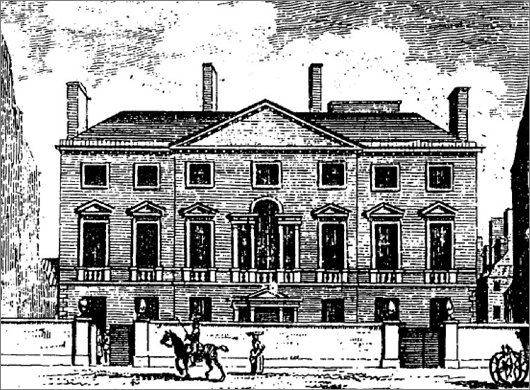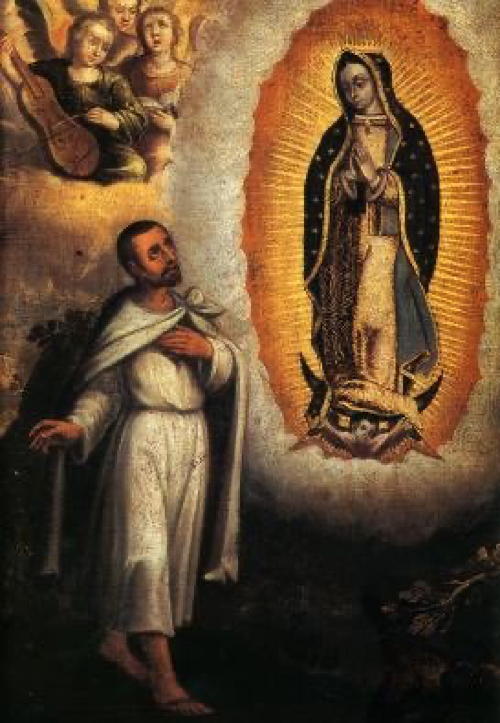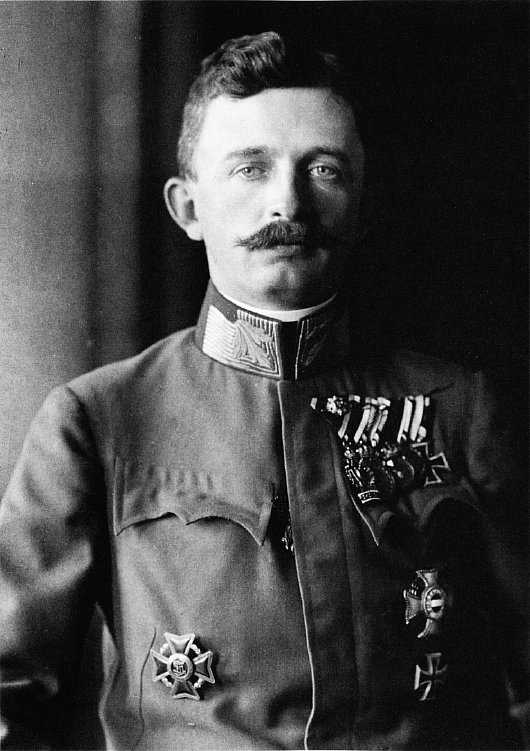World
About Andrew Cusack
 Writer, web designer, etc.; born in New York; educated in Argentina, Scotland, and South Africa; now based in London.
Writer, web designer, etc.; born in New York; educated in Argentina, Scotland, and South Africa; now based in London. read more
News
Blogs
Reviews & Periodicals
Arts & Design
World
France
Mitteleuropa
Knickerbockers
Argentina
The Levant
Africa
Cape of Good Hope
Netherlands
Scandinavia
Québec
India
Muscovy
Germany
Academica
The Hon. Lady Goulding
Grande dame of charity and sometime Fianna Fáil senator who provided a ‘harbour of hope’ for the disabled & represented Ireland in squash
IF, LIKE ME, YOUR Venn diagram shows a massive overlap for the circles representing politics, history, aesthetics, and design, then the Irish Election Literature website is a dangerous place where you can waste many minutes of your day. Not long ago, I stumbled across their collection of electoral bits related to Valerie, the Hon. Lady Goulding — at least I think that’s the proper style, these realms are arcane and murky. She was most often, but incorrectly referred to as Lady Valerie Goulding, the fate of many wives of baronets I’m afraid.
She was born Valerie Hamilton Monckton in 1918 at Ightham Mote (pronounced “item moat”, obv.), the house noted for its Grade I listed dog kennel. Her father, Sir Walter Monckton (later 1st Viscount Monckton of Brenchley) was a trusted friend of Edward VIII, and the teenage Valerie was employed as a messenger shuttling letters between the King’s refuge at Fort Belvedere and Stanley Baldwin in Downing Street. Visiting Fort Belvedere in 1993, Lady Goulding recalled the last lunch she had attended there in December 1936:
She [Mrs Simpson] was leaving that afternoon for Cannes, and everyone was talking about nothing so as to avoid what was on everyone’s mind. But one really nice thing happened: there were four bottles of beer next to my place. The King had remembered that when we were rounding up the ponies on Dartmoor the previous year I had a beer in the pub, and that he had remarked that I was very young to be drinking. It was very touching.
In 1939 she attended the Fairyhouse races and met Sir Basil Goulding at a dinner party. Goulding had significant business interests in Ireland and became known for once entering a bank board meeting on rollerskates. On her second visit to Ireland, they became engaged, and married quickly as the threat of war loomed on the horizon. Sir Basil served in the RAF, rising to the rank of Wing Commander, while Lady Goulding opted for the First Aid Nursing Yeomanry before switching to the Auxiliary Territorial Service. After the war, the Gouldings moved to Dargle Cottage in Enniskerry, Co. Wicklow. (more…)
Tretheague
Stithians, Cornwall
It having just been St Pirran’s Day recently, why not have a look at some Cornish property up for grabs? Just southwest of the Cornish village of Stithians is this curious little house named Tretheague, now up for sale from Savills with seventeen acres attached. Stithians is known for its agricultural show held every July since 1834 and “one of the largest and best-known ‘one-day’ shows in the West Country” according to the agents’ propaganda tells us.
“The Manor of Tretheague” the propaganda continues, “was owned by the ancient Cornish Beville family until the end of the 16th century. Philip Beville of Killygarth died leaving the property to his son in law, Sir Bernard Grenville of Stowe, who sold off various tenements and dismembered the manor as such. The family of Tretheague lived at the property for three centuries until Walter Tretheague died around 1602. They were followed by the Morton Family who did well from mining interests in the county until another wealthy tin adventurer, Nicholas Pearce, who developed Wheal Maudlin at Ponsanooth, took over the old manor in 1690.”
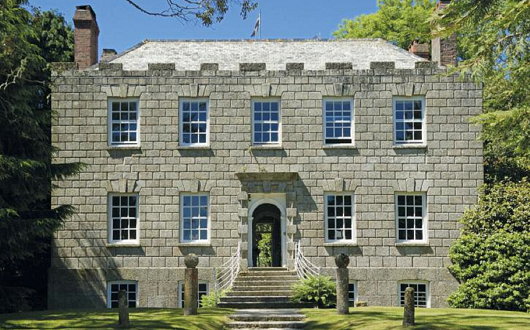
“John Pearce rebuilt the house the year before becoming High Sheriff of Cornwall in 1745 and his descendants sold the property to J M Williams in 1872, another member of a famous Cornish family that prospered from the Cornish mining boom. Under the guise of Williams Cornish Estate the property was sold privately to Bernard Penrose in 1962 who then spent almost 20 years restoring this somewhat unique and unspoilt gem that had remained almost unaltered since the time of its construction.”
“The house standing replaced an Elizabethan house that was recorded as having seven chimneys in the tax of 1660, although only small fragments of mullions and cut and chamfered stone survive. The major rebuild took place around 1744, almost certainly designed and overseen by the famous Greenwich architect Thomas Edwards who presided over several commissions in Cornwall for a period when rich County families and well-to- do mining adventurers felt it necessary to show off their new found wealth and elevation in Cornish society.”
“The house overlooks beautiful parkland which borders the drive and separates the house from the country lane. This parkland has been the scene of summer cricket matches from time to time and now contains individual specimen trees of lime, Canadian maple, beech and horse chestnut.”
“An imposing set of granite steps with wrought iron railings rise to the entrance which is at upper ground floor level. Inside the house much of the original period detail is intact, and on the upper ground floor the hall, panelled dining room and magnificent shallow-rise turning staircase feature fine plaster ceilings with modillions and Rococo detail.”
I like the exterior and setting, but from the photos the house feels curiously small on the inside. I somewhat dislike such primly contained box plans, and prefer a bit of awkward additions and extensions from centuries of use. Treatheague seems a bit too clean cut, but worth a look at least.

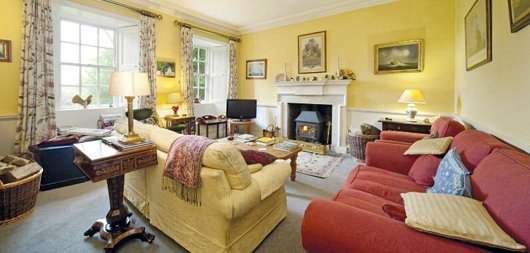
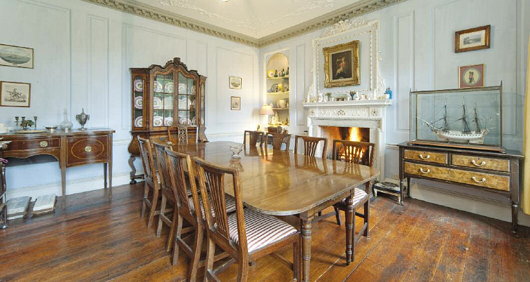

‘Called Before the Tribunal of Reason’
Some Essays of Pierre Manent in English
I’VE BEEN ON a Pierre Manent kick recently, whom a friend in Paris describes as “a giant, grossly under-rated in the Anglophone world and treated with considerable disdain even in France on account of not being a prisoner of ephemeral conventional wisdom. ”
Given the current penitential season, it might be worth reading Manent’s “Reason and Faith: A Lenten Reflection”. This paragraph was one among the many that struck me with its accuracy:
Christian faith, for its part, accepts being called to appear before the tribunal of reason. It is distinctive of the Christian God to leave man to his own counsel, and to put the fulfilment of the plan of salvation as it were at the mercy of human freedom. This is why Christianity is not a law, but a faith. This is why the Bible is not a teaching dictated by heaven like the Koran. It is a chronicle, full of detours, of an often-broken and ever-renewed covenant between divine goodness and human freedom.
Much of Manent’s pondering is on the realm of political philosophy. His 1999 essay “The Return of Political Philosophy” explores the death of political philosophy over the course of the twentieth century, while his lecture “Current Problems of European Democracy” examines the depoliticisation of European societies. “The Greatness and Misery of Liberalism” is also worth a read.
South Africa Gets Personal with Banknotes
New series will feature face of former president Nelson Mandela

South African President Jacob Zuma recently announced that the country’s central bank would issue a new series of banknotes featuring his world-famous predecessor, Nelson Mandela. As the South African Rand is a widely used currency throughout southern Africa, its banknotes have become well-known throughout the region, and current international standards recommend banknotes change their security features every seven-to-ten years. The changeover will take place as the South African government makes a significant investment in the state-owned South Africa Bank Note Company which also prints banknotes for a number of neighbouring countries. SABN hopes to upgrade its printing facilities to take into account the most recent improvements in banknote security features in order to prevent counterfeiting.

I’ll rather miss the old notes (above), branded into my memory from my time living in South Africa. For some reason (the exchange rate, perhaps?) I have nought but happy memories of the Rand and always enjoyed the beautiful animals in a variety of colours printed on the notes. While Mandela will feature on one side of the new issue of notes, the ‘Big Five’ game animals will continue to grace the reverse. The inoffensive animal theme was introduced to keep the currency relatively apolitical, and despite the widespread admiration for Mandela across South Africa, the introduction of the former president’s visage on bank notes is another symbolic way of imprinting the ANC’s grasp on power into the population’s psyche.
As for myself, being obsessed with everything Cape Dutch and Afrikaans, I rather miss the old image of Jan van Riebeeck which once graced South Africa’s rand notes.

Admiralty Arch for Sale
Sort of: Queen Offers Long Leasehold of Edwardian London Landmark
SIR ASTON WEBB’S great Edwardian Baroque office-building-cum-triumphal-gateway, Admiralty Arch, will be offered up for a long leasehold by HM Government. The Grade-I listed building, constructed between 1910 and 1912, is one of the best-known in London for finishing the long view down the Mall from Buckingham Palace and connecting it to Trafalgar Square beyond. Admiralty Arch features 147,300 square feet across basement, lower ground, ground, and five upper floors.
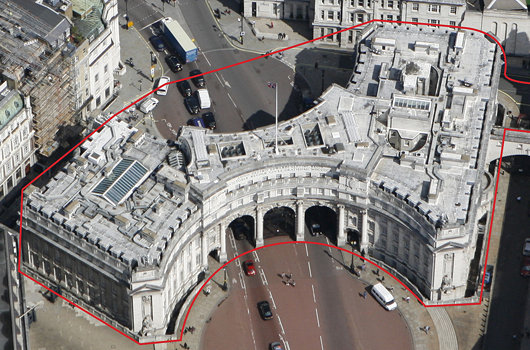
Savills have been appointed as the sole exclusive agent to seek interest in the long leasehold. “The Government’s objective is to maximise the overall value to the Exchequer from the re-use of Admiralty Arch,” the Savills press release noted, “and to balance this with the need to respect and protect the heritage of the building, now and in the future, enable the potential for public access and ensure awareness of, and be prepared to respond to, potential security implications.”
Our prediction: oil money from abroad will turn it into a hotel. Boring, I know!
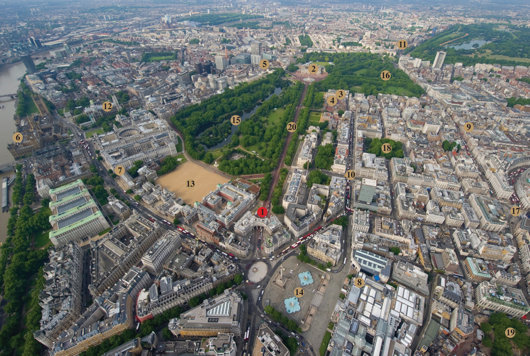
Hungary Reasserts Sovereignty
Deputy PM Navracsics asserts to shocked Commissioner that Council of Europe “cannot impose anything which runs counter to our constitution”
Hungary yesterday declared its sovereign primacy over the EU. In a heated dialogue between Tibor Navracsics and Commissioner Neelie Kroes, the Hungarian deputy PM staidly remarked that his country would not impose legislation which was contrary to its new constitution. The packed committee room gasped in horrified awe. Kroes was visibly furious as she stormed out, expressing her usual ‘grave concerns’ about Hungary.
Kroes had obviously been banking on Navracsics’s compliance with the Council of Europe’s recommendations, EU member states being bound to comply with the Council of Europe’s Fundamental Charter of Human Rights under the Treaty of Lisbon. The Hungarian government is under scrutiny from the EU for the possible breach of various articles of the Charter. When asked directly where his priorities lay in implementing recommendations, however, the founding member of the ruling Fidesz party stated “I’m a Hungarian member of parliament and I have sworn allegiance to the constitution of Hungary.” (more…)
Comper in Clerkenwell
The unbuilt Church of St John of Jerusalem
IN THE REALMS of architecture, the unexecuted project has a certain air of fantasy to it — the allure of what might have been. Ranking high amongst my favourite unbuilt proposals is Sir Ninian Comper’s project for the Church of St John of Jerusalem at Clerkenwell. Comper designed the scheme in the middle of the Second World War as a conventual church for the Venerable Order of St John, the Victorian Protestant revival of the old Order of St John (now more commonly known as the Order of Malta) which was banished from England at the Reformation. The design (below) is a Romanesque-Gothic hybrid, a splendidly exuberant cross-fertilisation of two styles more frequently opposed to one another in the minds of most.
One of the proposals for the serious reform of the Order of Malta in Britain is for the Grand Priory of England to divest itself of its interest in the Hospital of St John & St Elizabeth and its associated chapel in St Johns Wood. Owing to a complicated series of events, conventual events are taking place at the Church of St James, Spanish Place already. As the Venerable Order never executed Comper’s brilliant design, perhaps the Order of Malta might consider buying a suitable site in London and making Comper’s fantasy a reality.
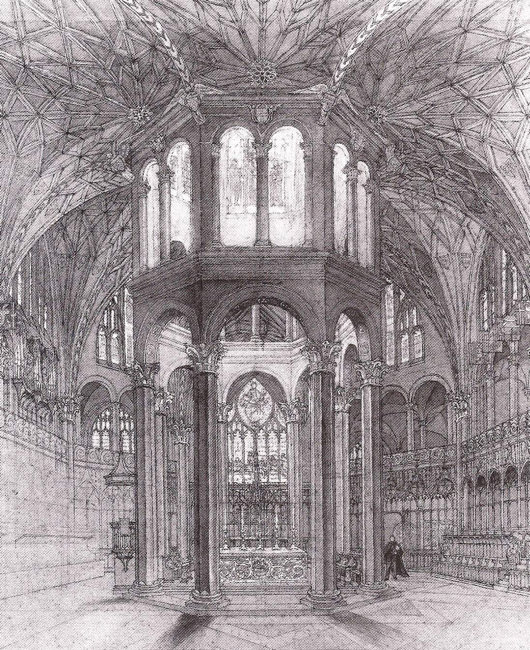
A Place in Paris
With a view over the Place des Victoires
If you’re in the market for a little place in Paris, centrally located, Knight Frank has got just the thing for you. Admittedly, it’s only a wing of a larger hôtel particulier on the Rue Vide-Gousset, but it has an enviable view over the Place des Victoires. Mind you, I’ve always been of two minds about the Place des Victoires. I’m not particularly a fan of Louis XIV, whose somewhat silly equestrian statue presides foppishly over the centre of the circus: I’ve always blamed him for the French Revolution, failing to heed Margaret Mary Alacoque’s warnings and all that. But the statue’s only been there since 1828, so perhaps it can be replaced with something better in a suitably classical style. (more…)
Adding to Ulster’s Party Panoply
Tim Montgomerie’s ConservativeHome website reports that the Conservative & Unionist Party is setting up its own party in Northern Ireland, following the failure of its collaboration with the Ulster Unionist Party. At the last election, the Tories ran a joint ticket with the UUP under the name ‘Ulster Conservatives and Unionists – New Force’ which fell rather flat.
In the years before the party system was as solidly formalised as it now is, Unionist MPs took the Conservative whip at Westminster but today the SDLP is the only Northern Irish party which takes the whip of a British party (in its case, Labour). Gradually official Unionists found themselves increasingly challenged by upstarts, which evolved into the formal division between the Ulster Unionist Party (moderate liberal-conservative unionists) and Paisley’s Democratic Unionist Party (hardcore conservative unionists).
The decision to start a separate Conservative & Unionist party for Ulster is a curious one, as it can only further split the Unionist vote, already divided between the dominant DUP and the fading UUP. This is at least simpler than in the 1990s and 2000s, when the vote split between these two and smaller Unionist groupings like the UK Unionists, the Progressive Unionist Party, the Ulster Democratic Party, and the Northern Ireland Unionist Party.
My favourite Unionist Party, however, was that which dominated the political scene in the Punjab from the First World War until Partition. It was primarily the instrument of the Muslim, Hindu, and Sikh gentry of the province, and counted three holders of knighthoods — Sardar Sir Sikander Hayat Khan, Sir Fazli Husain, and Rao Bahadur Sir Chhotu Ram — among its founders. Alas, with the increasing enmity between the Hindu and Muslim populations of India, its existence became unsustainable, and even the Punjab Province itself was split between Pakistan and India at independence. Sic transit gloria mundi!
Cardinal Manning
Over at Reluctant Sinner, Dylan Parry has an excellent post on Cardinal Manning, the second man to serve as Archbishop of Westminster. Manning is all too often forgotten, despite being one of the most widely loved and respected men of his generation. His funeral, famously, was the largest ever known in the Victorian era. Besides his wisdom at the helm of England’s most prominent see, the good cardinal’s greatest legacy might be his influence on Rerum Novarum, the great social encyclical of Leo XIII. Dylan is planning on writing further on the subject of Cardinal Manning, giving us something to look forward to. (more…)
Die nuwe Volksblad
Not to be too Gollumesque about things, but I hates it! I always thought the Volskblad (Bloemfontein, daily, Afrikaans, f. 1904, circ. 28,000) had one of the most dignified and handsome banners of all the Afrikaans dailies. The logo of the “People’s Paper” exudes a certain classical dignity and seriousness. Previous banners (see slideshow below) conveyed an individuality. I particularly like the chiseled blackletter typeface used in the second banner displayed below: strength, dignity, tradition, age. (more…)
Portales of Madrid
Dino takes a look at the entrance halls to apartment buildings in Madrid:
The calles and avenidas of Madrid are decorated with some of the most elegant apartment house entry halls in the world. What a delight to take a stroll just after sunrise when doors are flung open, floors are swept, brass is polished—the city’s portales are made ready to welcome and to bid goodbye in style.
It’s the perfect place to compose oneself, button up a coat, search pockets or purse for a note, or deal with an umbrella (rarely a requirement in Madrid), before facing the porter or the street. …
Click here for more.
St Andrew’s & Blackfriars Hall, Norwich
NORWICH, THAT CITY of two cathedrals, is known for Colman’s Mustard and the television cook Delia Smith (herself Catholic). Unknown to me until recently is that the capital of one of England’s greatest counties is also home to the most complete Dominican friary complex in all of England. The Dominicans had arrived in Norwich in 1226 — the swiftness with which they reached the city comparative to the foundation of the Order of Preachers is indicative of England’s inherent inclusion in the Catholic Europe of the day.
From 1307, the OPs occupied this particular site in Norwich until the Henrician Revolt, when the friary was dissolved and the city’s council purchased the church to use as a hall for civic functions. The nave became the New Hall (later St Andrew’s Hall) while the chancel was separated and used as the chapel for the city council and later as a place of worship for Norwich’s Dutch merchants. (The last Dutch service was held in 1929).
The complex has been put to a wide variety of uses. Guilds met here, as did the assize courts. It was used as a corn exchange and granary. King Edward VI’s Grammar School began here. Presbyterian and Baptist non-conformists worshipped in various parts during the late seventeenth century. William III had half-crowns, shillings, and sixpences minted here. In 1712, the buildings became the city workhouse until 1859, when a trades school was established the continues today elsewhere as the City of Norwich School. The East and West Ranges are now part of the Norfolk Institute of Art and Design. (more…)
A Breath of Fresh, Northern Air
The Dorchester Review Proves That Canada is Still Thinking
This summer I received an email from my friend Bruce Patterson, all-around nice guy and Deputy Chief Herald of Canada, informing me of a new historical and literary review just founded called the Dorchester Review. Intrigued, I obtained a copy and was pleasantly enthralled with what I found. The first issue of the Dorchester Review contained a variety of thoughtful articles on fascinating subjects. I spent an entire morning sitting comfortably on a café sofa and imbibing the intelligent and enlightening contents of the magazine.
The editors did issue a brief statement explaining the genesis of their new review. They had me at their Pieperian first sentence: “The Dorchester Review is founded on the belief that leisure is the basis of culture.”
Just as no one can live without pleasure, no civilized life can be sustained without recourse to that tranquillity in which critical articles and book reviews may be profitably enjoyed. The wisdom and perspective that flow from history, biography, and fiction are essential to the good life. It is not merely that “the record of what men have done in the past and how they have done it is the chief positive guide to present action,” as Belloc put it. Action can be dangerous if not preceded by contemplation that begins in recollection.
The endeavour of reviewing books, the editors acknowledge, has too often been reduced either to brief puff-pieces in the Saturday insert of the local paper or more high-minded but uncritical praise of like-minded academics for one another. “There are too few critical reviews published today, particularly in Canada, and almost none translated from francophone journals for English readers.” As someone with a lifelong love of Quebec, I am relieved that finally there is a review in my own language willing to take Quebec seriously.
“At the Review,” the editors continue, “we shall praise the good books and assail the bad.”
They also forthrightly explain their rejection of the narrow nationalist perspective that has been on the ascendant in Canada throughout the past century, especially since the foundation of The Canadian Forum. The Dorchester Review effectively throws Canada’s doors open to a more reasoned understanding of the country’s relationship with Europe (Britain and France particularly), America, the Commonwealth, and the world.
But the Dorchester Review is not a publication just for Canadians. There is a great deal of Canada in it, but also a great deal of the world. The second issue (just printed) features articles with titles such as “Why Marx is Still (Mostly) Wrong”, “1789: The First Counter-Revolutionaries”, “What Sort of Autocrats Were the Popes?”, “Can Vichy France Be Defended?”, and “The Scots Fight Back” (the last in response to an article in the first issue: “How the English Invented the Scots”).
Contributing editor Chris Champion is interviewed by CBC Radio here. A number of the contributors (Conrad Black, Paul Hollander, etc.) readers of The New Criterion will already be familiar with. The latest number also includes a book review by this, your humble and obedient scribe.
Head over to dorchesterreview.ca to find out more or subscribe.
Burn Baby Burn!
A Burning-in-Effigy at Exposes the Cowardices of Tomorrow’s Politicians
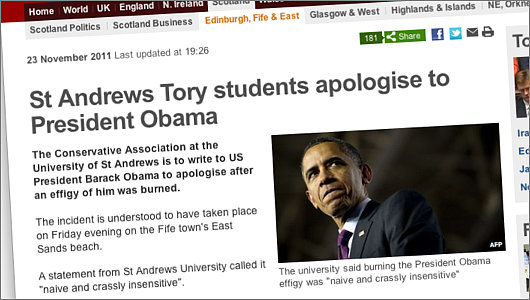
I cannot condemn this in more stringent terms. The Tories at the University of St Andrews have apparently burnt Barack Obama in effigy and then backtracked with all manner of pussyfooting around and the standard issue of apologies. Burning in effigy is a perfectly legitimate form of political expression and has been verified by centuries of tradition.
What’s more, I suspect there’s a bit of the old racism behind the apologies: would anyone have bat an eyelid if Mr Obama’s predecessor had been burnt in effigy by students? I, for one, would have happily joined in both effigy-burnings. The more effigies burnt the merrier. Chesterton remarked “It is terrible to contemplate how few politicians are hanged”, and I would suggest effigy-burning is a potentially more wholesome if less efficacious alternative.
If you’re going to burn an effigy, burn an effigy and then stick with it. But the weak-kneed, shilly-shally Tories always want to engage in a bit of old-school fun before hoisting up the white flag and issue an “unreserved public apology”. Rank hypocrisy of the highest order! Ye cannae have yer cake an’ eat it, too!
Begley Takes to the Skies
Brave Bear Skydives in Support of Hammersmith’s Irish Cultural Centre
The Irish Cultural Centre in Hammersmith, London is in danger of closing as its landlord, the local council, is putting the ICC’s building up for sale. The enterprising folk at the Centre have launched the Wear Your Heart for Irish Arts campaign to raise the funds required to save this outpost of Gaelry and have adopted Begley the Bear as the campaign mascot. Begley is a brave little lad and he recently undertook a charity skydive to raise money for the Centre.

Alright, he wasn’t so brave at first, but he worked up the courage in time.

The ICC’s assistant manager, Kelly O’Connor, accompanied Begley on his endeavour.


She had to cover poor Begley’s eyes at the start…

…but then they got into the swing of things.

And at the end of the day, who could say no to a pint of plain?
Le drapeau « Jacques Cartier »
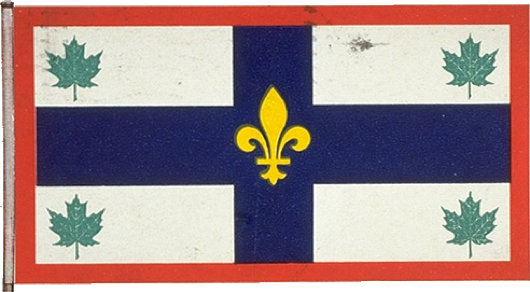
To be filed under ‘Flags I Never Knew Existed’: the Québécois heraldist Maurice Brodeur designed a flag commemorating the French explorer Jacques Cartier, founder of Quebec and Canada.
The banner was designed to hang as an ex-voto in the Memorial Basilica of Christ the King in Gaspé, conceived in the 1920’s as an offering of thanks for the four-hundredth anniversary of the claiming of Canada by Cartier.
The Great Depression brought the project to a halt, and the church was finally finished in 1969 as a modernist cathedral in wood — the only wooden cathedral in Catholic North America.
Was the flag ever actually executed? I don’t know, but I doubt it.
The Old In & Out
Cambridge House, Number Ninety-four, Piccadilly
ON MY WAY TO the Cavalry & Guards Club yesterday for lunch with an ancient veteran of King’s African Rifles (“Hardly qualify for this place — Black infantry!”) I realised I was a bit ahead of schedule and so took a gander at Cambridge House, the former home of the Naval & Military Club on Piccadilly. It’s surprising that an eighteenth-century grand townhouse of this kind has sat in the middle of the capital completely neglected, unused, and falling apart for over a decade.
They Will Bury Us!
But it will at least be a Christian burial
In 2003, the lamentable and vulgar government of Britain launched Beagle 2, part of the European Space Agency’s ‘Mars Express’ programme. It contained a pop song fragment by ‘Blur’ and an “artwork” by Damien Hirst to calibrate its cameras and spectrometers. The whole thing was a failure, contact with Beagle 2 being lost six days prior to its scheduled entry into the Martian atmosphere.
Whereas we sent dull pop music and bad art, the Russians have one-upped us again. To celebrate the fiftieth anniversary of the first man in space, they’ve taken an icon of Our Lady of Kazan aboard the Soyuz TMA-24 mission.
(With apologies to Comrade First Secretary Krushchev for the paraphrased post title.)
Meanwhile, in the Dominions
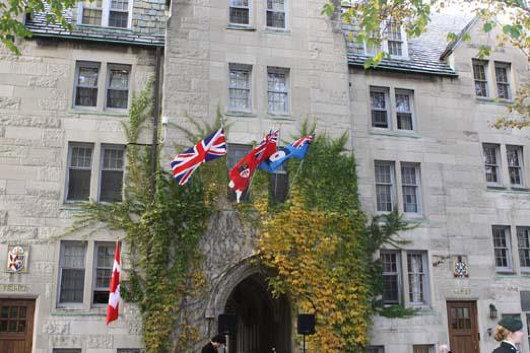
The University of St. Michael’s College in Toronto is, so far as I can ascertain, home to the only memorial ‘slype’ in the world, the Soldier’s Memorial Slype. Today being Remembrance Sunday, it was adorned with the old Canadian flags: the Union Jack, the Red Ensign, and the Air Force Ensign. (I can’t quite make out from the photograph whether it’s an RAF ensign or, more likely, an RCAF ensign).
The University of Toronto is, curiously, a university with constituent universities (such as St. Michael’s) within it, something which always confused me even though it’s an increasingly common phenomenon (such as with the National University of Ireland). At U of T, Trinity College (sorry, the University of Trinity College) is generally considered the most trad, but it’s nice to see St. Mike’s, a Catholic institution, being a bit old-school itself.
St. Michael’s College also boasts such illustrious alumni as Marshall McLuhan and Dino Marcantonio.
Search
Instagram: @andcusack
Click here for my Instagram photos.Most Recent Posts
- Faithful Shepherd of the Falklands April 8, 2025
- Articles of Note: 8 April 2025 April 8, 2025
- Proportionality Destroys Representation April 8, 2025
- Sag Harbor Cinema March 26, 2025
- Teutonic Takeover March 10, 2025
Most Recent Comments
Book Wishlist
Monthly Archives
Categories

